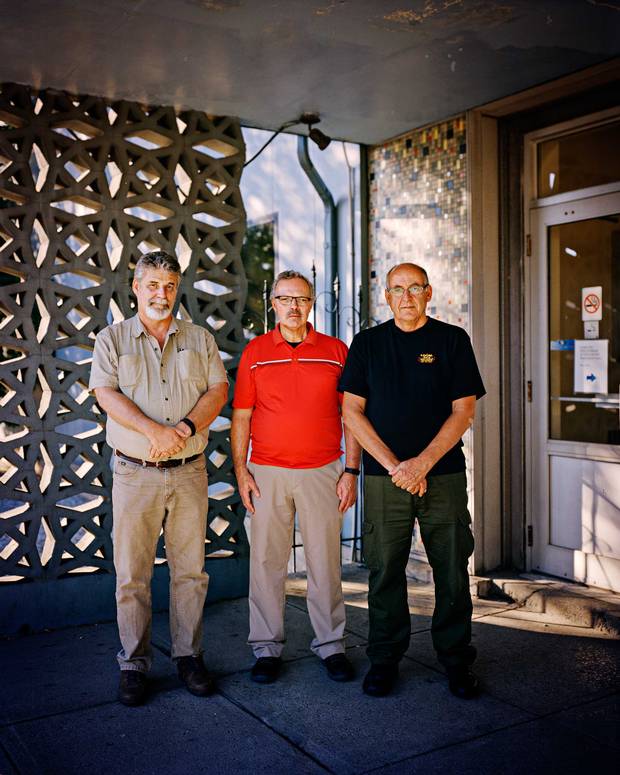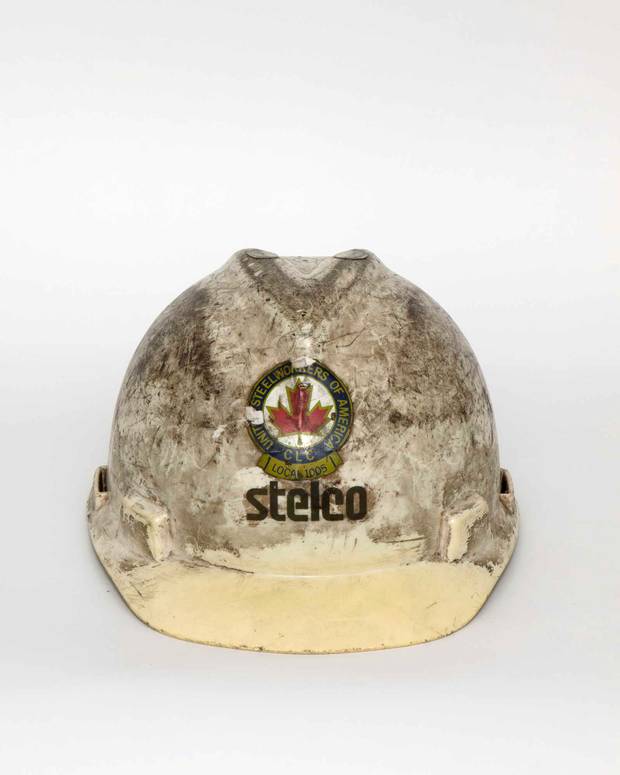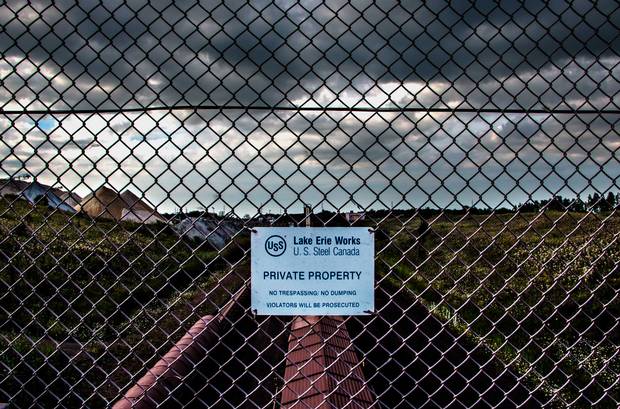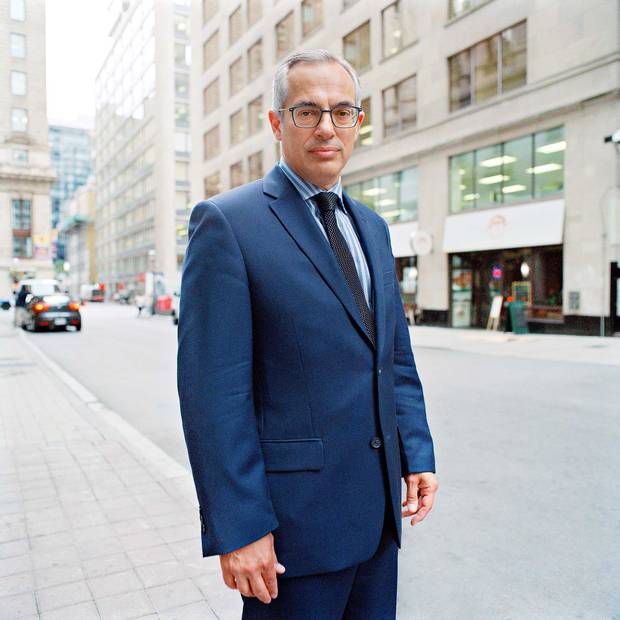As the executives gave their spiel, Tony Clement's blood began to boil.
It was a cold Ottawa morning in the winter of 2009, and Clement was sitting in a boardroom on the 11th floor of the C.D. Howe Building, a couple of blocks from Parliament Hill. As the Harper government's newly minted minister of industry, Clement was listening to a couple of managers from U.S. Steel Corp. indicate that they had no intention of upholding their end of a deal with Ottawa, made only two years earlier, that allowed U.S. Steel to take over Stelco, Canada's iconic steelmaker.
The visiting executives said that brutal conditions in their business gave them no choice but to renege on their commitments to maintain Stelco in robust health.
What ticked off Clement was their cockiness. "I felt they were belligerent. They were waltzing into the office and dictating terms and not looking for any kind of mutually acceptable halfway point," he recalls. "So I didn't like their attitude. I didn't like the way they were treating Canadian workers. I didn't like the way they were treating our agreement with them."
So upset was Clement that he soon had his department sue U.S. Steel for walking away from its commitments.
That moment may have marked the lowest point in nearly 20 years of turbulence at Stelco, but it's hard to say for sure—there have been so many low points. Another came five years later, when U.S. Steel put Stelco into creditor protection under the Companies' Creditors Arrangement Act (CCAA). And another came a year later, in 2015, when U.S. Steel walked away from the company altogether, claiming to have lost $2.2 billion on its short-lived Canadian foray—and saying that it wanted its money back.
Today Stelco is a shadow of its former self. In its heyday, it was the largest steel manufacturer in Canada; it employed 26,000 people as of 1981. Stelco now has a head count of barely 2,200, and only a quarter of its Hamilton facility is operating. And once again, the company is up for sale. Or rather, what's left of it is up for sale, with one offer on the table. As one former executive said of Stelco as of 2015, "There is no company there. It's a shell."
The demise of Stelco symbolizes the host of challenges that Canadian manufacturing has struggled with in the last 30 years. Globalization: check. Technological disruption: check. Legacy costs like underfunded pensions: check. Likewise with hollowing-out by foreign owners, wavering public policy, reliance on a cheap dollar, creative repurposing of bankruptcy law and, finally, the opportunistic attentions of distressed-debt investors—Stelco has been rocked by them all.
Many believe U.S. Steel took a sound company, albeit one in a challenged sector, and, when faced with adversity, switched tack and sought to destroy it. This is not just the view from the left. "The Steelworkers union is not exactly a right-wing organization, but they were bang-on," says Clement, who is now running to succeed Stephen Harper as leader of the federal Conservative Party. "I agreed with them: They were getting shafted. Here I was, a Conservative minister, agreeing with one of the more radical union leaderships in North America…U.S. Steel was being, in my mind, a predatory organization."
It's not every day that a Tory and the Steelworkers can agree, but U.S. Steel's sacking of Stelco makes for one of those times. Despite that consensus, the question remains: How did it come to this? How did a colossus of Canadian industry, the company that made Steeltown, get reduced to remnants?
It turns out there's lots of blame to go around.

Stelco is a shadow of its former self. In its heyday, it employed 26,000 people. Now, it has a head count of barely 2,000, and only a quarter of its Hamilton facility is operating.
Stephen Brookbank
The heart of Stelco was its Hilton Works, lately called the Hamilton Works, which sprawls over more than 800 acres alongside Hamilton Harbour, defining the cityscape.
Next door stands Dofasco, once junior in size to Stelco, but now Canada's biggest and most successful steelmaker. Like Stelco, it was taken over by a foreign giant, so today it's formally called ArcelorMittal Dofasco. Both parent and subsidiary have, like Stelco and its parent, contended with the sector's upheaval and the mercurial, mostly low, steel prices that resulted. But Dofasco's smokestacks belch smoke and steam all day, while Stelco's weed-filled works are mostly quiet, with its blast furnace having been shut down six years ago and a unionized workforce of only 500 remaining.
Founded in 1910 with the amalgamation of five steel companies, Stelco prospered during the First World War. By the 1930s, after duties were placed on American steel imports, Stelco and Dofasco together grabbed much of the Canadian market.
In 1946, Stelco was unionized after a bitter and lengthy strike that academics see as a turning point in Canadian labour history. It was a pivotal moment for Hamilton too—that 10,000 people, led by Mayor Sam Lawrence, would march in support of the strike spoke to how the city's identity, perhaps uniquely in Canada, was industrial and working-class, with a strong radical streak.
The 1946 strike, which organized most of Stelco's workers under the United Steelworkers of America banner, was a preview of fractious labour relations that produced an average of one walkout per decade thereafter. While labour and management couldn't seem to break out of a combative culture at Stelco, a pattern was set where Dofasco's workers effectively enjoyed the same conditions that Stelco's workers had to fight for.
Stelco prospered during the postwar economic boom, and by the early 1970s it boasted more than $1 billion in annual sales and some 24,000 employees. It was a golden era for the entire sector, in which the most prominent player outside Hamilton was Algoma Steel in Sault Ste. Marie. "The steel industry was one of the class acts of Canadian industrial capitalism—Canadian-owned, Canadian-managed, a very strong record of technology and innovation and productivity," says Peter Warrian, a steel industry expert and a research fellow at the University of Toronto's Munk School of Global Affairs. "And Stelco was the central pillar in that."
In 1980, with its Hamilton Works aging and offering scant room for expansion to meet anticipated growth in demand, Stelco opened the first phase of a mill 60 kilometres southwest on Lake Erie near Nanticoke. After 15 years of planning, six years of construction and $870 million in spending, Stelco now owned one of the most advanced and productive mills in the world. Yet the facility never reached its potential: Thanks to a strike in 1981 and big-picture conditions—the recession of 1981-'82, the apparent end of steady 6% annual growth in global demand for steel—the plant's finishing lines were never built, so steel had to be sent up to Hamilton to be processed. At 2.5 million tons a year, the plant produces a fraction of what it was supposed to.
Stelco also indulged in the era's vogue for diversification, expanding into businesses that were distractions from the problems of steel. Still, the company continued to invest in new technologies: In 1992, it introduced a high-end galvanizing process for the automotive industry, the "Z-line." As of 1995, the company could boast it was in good health: It had 11 subsidiaries, a high return on equity, a low debt-to-equity ratio, and almost $200 million in cash reserves. The firm was highly profitable. One former Stelco executive says: "It was competitive with anybody in North America."
But the bubble was about to burst.
By the 1980s, integrated steelmakers like Stelco, which make virgin steel out of the raw ingredients of iron ore and coal, were facing a growing threat from "mini-mills" that employ electric arc furnaces to melt scrap metal. Mini-mill technology can produce steel with only a fifth as many workers as an integrated plant. Non-unionized and unburdened with the legacy costs of old-guard firms—most notably pension obligations—the mini-mills hoovered up business. "If you look at the steel industry in the U.S. before the 1970s, electric furnaces were about 15% of steel production," says Charles Bradford, a metals analyst with New York-based Bradford Research Inc. "Now they're 65%.…And Stelco was much more of a producer of products competing with the mini-mills." Stelco did not entirely sit still in the face of this threat: It built two electric-arc plants of its own, in Montreal and Edmonton. But experts like Warrian say Stelco, unlike Dofasco, didn't summon up an effective response to the writing on the wall for North American manufacturing in general, and steel in particular—the future was not in interchangeable commodity goods but in higher-value-added specialty products.
The threat to the old model wasn't just the mini-mills but also increasing foreign competition. By the 1990s, the steel industries of Asia, Russia and Europe had scaled up and oriented themselves to exports. With tariffs falling under trade agreements, Canada's steel producers now had to compete with cheaply produced and cheaply priced steel being dumped into the North American marketplace. A global glut of capacity emerged, dampening prices.
The sector was set for a fall. When the 2001 recession struck, 40 North American steel producers declared bankruptcy, production capacity fell by almost half and the industry's head count fell by 400,000. Many companies slashed costs by reopening union contracts, chopping pension and benefits liabilities, and amalgamating. "They all faced this," observes James May, managing director of Steel-Insight, a Toronto-based research firm. "The ones that have been successful have modernized and dramatically changed their cost base and working culture.…And Stelco didn't quite get it."
Stelco was now losing money and entering a turbulent period at the management and board level. While attempting to wring concessions from employees, including a 20% pay cut, "the board got activist," according to a management source. "It started undermining the structure that was there….They got mesmerized with 'shareholder value' and ended up destroying the place."
The Hammer: A portrait
See photographer Stephen Brookbank's long-running project documenting the changing face of Hamilton
The turmoil came to a head in 2003. Facing losses of more than $20 million a month, the CEO of Stelco, James Alfano, stepped down.
Hanging over management's head was a fateful decision made by Alfano's predecessor, Fred Telmer, shortly after signing a new contract with the Steelworkers in 1996. Using a loophole created by the Ontario New Democratic Party government of Bob Rae, Telmer began reducing payments to the pension plan. A complaint by the union was deemed "without merit" by the company; when the Steelworkers took the issue to the Ontario Labour Relations Board, it agreed with the company. By 2003, the pension liability was an alarming $1.25 billion.
Of all the issues that Stelco struggled with, the pension overhang turned out to be the decisive one. Pension provisions had been negotiated in good faith by management and union, and from the Steelworkers' perspective, it was management's problem if it couldn't deliver. Yet as technology and competition shrank the workforce, Stelco turned into a company with more pensioners than employees, an imbalance that grew steadily worse. The picture of health that the company presented as of 1995 seemed to date from a distant era.
A few months after Alfano resigned, the board appointed Courtney Pratt as his successor. He was the first of a series of Bay Street heavy-hitters who would try to plot Stelco's future. While previous CEOs had been steel lifers, Pratt's background was at a miner, Noranda Inc., and a public utility, Toronto Hydro.
Pratt's solution to Stelco's woes was textbook: Place it into creditor protection in the hope of cleaning up its financials. "The issue was that we were not a competitive company," argues Pratt. "The whole U.S. steel industry had been restructured, and we hadn't been….We were looking at running out of cash in about eight months."
One person advising Pratt—and pushing for creditor protection under the CCAA—was Hap Stephen, one of Bay Street's top restructuring and turnaround specialists. "Most of [Stelco's] competitors had gone through a restructuring and dealt with a lot of the legacy costs—things like the pension liabilities, post-retirement benefits obligations," he says. (Stephen earned $4.1 million for his work counselling the board.)
Thus, in January, 2004, mere weeks after Pratt took over, Stelco's board placed the company in creditor protection. The previous day, however, CIBC World Markets reported that steel prices were rising and would continue to climb in the short term. "The 2004 insolvency was simply a state of the board panicking," says one former Stelco executive. Stelco needed major work, but an about-face from lassitude to emergency mode had the effect of putting a target on the company's back.
The hasty decision was made despite the fact the company was not technically insolvent. And although Stelco had been losing money, it was also sitting on $163 million in cash and credit. Moreover, now that steel prices were rising, the company was profitable. Rolf Gerstenberger, then president of Steelworkers Local 1005, which represents workers at the Hamilton Works, laughs when he thinks back on this turn of events. Suddenly, the firm was "rolling in the money….Then Courtney Pratt comes to us and says the contract says we're supposed to give you a bonus. 'Would it be all right if we give you all a bonus?'—the first time in 10 years. And we're in bankruptcy. Okay, come on now."

The Steelworkers’ determination to protect pensions decided more than one outcome at Stelco. From left: Local 8782 president Bill Ferguson; Local 1005 president Gary Howe; and Howe’s predecessor, Rolf Gerstenberger.
Stephen Brookbank
Gerstenberger was soon labelling the decision to go into CCAA "legalized theft." It was a sentiment shared by Stelco's shareholders, who were facing the prospect of their shares being wiped out. Murray Pollitt, president of Pollitt & Co., a Toronto-based boutique brokerage whose clients held Stelco shares, was outraged, arguing that Stelco wasn't insolvent. He hired experts to produce independent reports that concluded steel prices would remain high for a while, and retained lawyers who argued in court that Stelco's board was deliberately undervaluing the company's assets. Pollitt passed away in 2012, but his son, Doug, who now runs the firm, doesn't mince words: "Stelco was in no imminent danger of not paying its bills….It was a $1-billion shafting of shareholders."
Now that it was in creditor protection, Stelco was up for grabs to the bidder with the best offer. Presiding over its future was Justice James Farley, in his swan song. A bankruptcy specialist who had twice seen Algoma back onto its feet, he was famous for knocking heads together. If shareholders had to be wiped out in the process, that, to Farley, was a lesser evil.
Soon it was apparent that Stelco's new suitors were not going to be the usual clutch of steel companies, but would come from the world of high finance. In fact, some of Bay Street's most celebrated distressed-debt buccaneers were circling the steel company.
On one side of the battle was Roland Keiper, once dubbed "the Smartest Guy on Bay Street" for his genius at discovering soft spots in companies like Newcourt Credit Group Inc. and then making a killing by shorting their stocks—first at RBC Capital Markets and then at his own investment firm, Clearwater Capital Management Inc. With the backing of a block of shareholders, Keiper managed to get a seat on Stelco's board in 2005 to ensure their interests were heard (Farley, however, soon threw him off the board).
Also in the fray was Tricap Management Ltd., the distressed-debt division of Brookfield Asset Management Inc., the $250-billion (U.S.) asset management company that, in various incarnations, has been a force in Canadian business since before there was a Bay Street. Tricap was trying to figure out how to profit from the situation too: Its modus operandi is buying ailing manufacturing companies cheap, slashing costs and then selling them for a healthy profit.
In the end, Stelco's fate was decided by the Steelworkers union. Fearful of what would happen to the pension plan, the union climbed into bed with Tricap and two other equity funds, Sunrise Partners LP and Appaloosa Management LP. Sunrise was an investment vehicle for Greg Boland, one of Bay Street's most successful hedge fund managers (and a onetime protegé of Keiper's at RBC), while Appaloosa is an American hedge fund founded by David Tepper, who once was on the junk-bond desk at Goldman Sachs. The union felt these outfits were offering the best deal to fund the pension plan.

Stephen Brookbank
The deal reached in a series of steps in late 2005 and early 2006 was complex, but in one sense simple: It wiped out all of the original shareholders' shares. New shares were issued. Meanwhile, the bill for the entire CCAA process was steep—$125 million, mostly in legal fees. The bill was partially paid by selling off some of Stelco's profitable divisions.
The new board hired Rodney Mott, a former U.S. Steel engineer and executive at mini-mill specialist Nucor Inc., to run Stelco. As part of his compensation, Mott was given options on one million of Stelco's new shares. He doubled down by buying another million shares himself. But it was clear Mott was a caretaker; Tricap and its partners were waiting for the most propitious time to unload Stelco. "They look to buy cheap, improve it and flip it," says Mott, who now lives in retirement in South Carolina. Mott smoothed relations with the union, shuttered some assets and got Stelco ready for its next owners.
Within a year, two steel companies were showing keen interest.
As steel became more of a global game, the major players sought savings in the classic way—via a frenzy of mergers and acquisitions. Early in 2006, Luxembourg-based steel giant Arcelor outbid its German rival ThyssenKrupp to buy Dofasco. Arcelor then tried to merge with what was then Russia's No. 1 firm, Severstal, but ended up being taken over itself by the Indian firm Mittal Steel, forming ArcelorMittal, the world's largest steelmaker.
The Dofasco purchase wasn't the only way Canada's steel industry was becoming Indian: In 2007, a subsidiary of Mumbai-based Essar Group took over Algoma.
Amid these and many other deals hatched around the world, some consummated, others not, Stelco, too, was sized up—above all, by Severstal and by U.S. Steel, whose home base is the steel heartland of Pennsylvania. With 2015 sales of $11.6 billion (U.S.), Pittsburgh-based U.S. Steel is an iconic American company, founded in 1901 and linked with Gilded Age titans like Andrew Carnegie and J.P. Morgan.
U.S. Steel was looking across Lake Erie with a view to gaining a foothold in Canada, largely because of the Canadian industry's lucrative contracts with the auto industry. "I think it's pretty clear that what U.S. Steel wanted to do was consolidate in North America, and I think what they wanted was Stelco's order book," opines Hugh Mackenzie, a former research director for the Steelworkers in Canada. (U.S. Steel and its past and current executives declined to be interviewed about any aspect of its history with Stelco.)
But the prize did not come cheap: The bidding war between U.S. Steel and Severstal drove share prices up to $38.50. In the end, U.S. Steel paid $1.2 billion (U.S.) for all of Stelco's stock. It also covered $785 million (U.S.) in outstanding debts.
Crucially, U.S. Steel, like the Bay Street vendors, had secured the backing of the Steelworkers head office in the U.S., albeit a head office headed by a Canadian, Leo Gerard. The union felt the company was committed to funding the pension plan. Given U.S. Steel's record with the Steelworkers, the decision appears to have been made out of desperation. "The history of U.S. Steel and labour relations is atrocious," says Mike Locker, president of Locker Associates Inc., a New York-based steel-industry consultant. "[U.S. Steel management are] a very, very primitive bunch of people, what can I tell you?"
For the Bay Street players at least, the Steeltown bet was profitable. After all, they'd bought their shares at the new-issue price of just $5.50. Brookfield made a profit of $375 million, while Appaloosa and Sunrise took home about $167 million each—about seven times their original investment. Rodney Mott walked away with $67 million after cashing in his shares—an astonishing haul for all of 19 months on the job. Meanwhile, roughly 2,000 workers had lost their jobs, with just 3,600 left on the payroll.
The sale came with significant strings attached: U.S. Steel had to make some 31 promises to Investment Canada before Ottawa would green-light the takeover of the Canadian-owned company. U.S. Steel promised to increase annual production by at least 10% over three years, and to keep at least 3,105 people employed. Many people involved were skeptical, including Mott. "I just didn't see how it was going to work," he says. "At that time they were just trying to get approval of the purchase."
Mott is no fan of U.S. Steel's management style either, finding it to be high-handed. The handover from his reign was abrupt. "We thought there might be a little transition, but there wasn't…I really don't think they took the time to learn the culture."
Indeed, U.S. Steel immediately set about turning Stelco into its Canadian branch plant, renaming it U.S. Steel Canada and stripping out its marketing, R&D and other departments. Still, most sources say the company aimed, in its way, to make the investment work. "I spent a lot of time speaking to the folks at U.S. Steel, and I think their intentions were good and honourable," says Courtney Pratt. And for the first year, it looked like a brilliant buy: The plants were running at full tilt and were profitable, with an assist from the low Canadian dollar.
The good times would be short-lived: The 2008 credit crisis led to an implosion of demand. Steel prices, while volatile, had gone upward in the long term. Since 2008, they mostly haven't. The glut that had characterized the global market since the 1990s continued.
If Stelco had been a combative place before, these conditions spelled that things were about to get worse. Few of Stelco's employees were prepared for U.S. Steel's brand of administration. Ivo Foglietta, who logged 37 years at the Hamilton Works as an overhead crane operator, describes U.S. Steel's approach as "Hitler on steroids. Very aggressive management style; quick to blame—it's always your fault."
It was at the Lake Erie Works where the culture clash was most apparent. Local 8782 represents 1,000 employees at the plant, which sprawls along the edge of the lake in the pancake-flat farming area of Nanticoke. For Local president Bill Ferguson, an analogy comes to mind. "You ever hear the story about the Americans who come across the border in July with skis on top of their car and want to know where the ski mountains are?"
The Lake Erie Works remains one of the most efficient integrated steel plants in North America: To Ferguson, it's "a licence to print money." Yet his Local eventually had 700 grievances against the new management going to arbitration—compared to two for Mott's entire tenure. Ferguson found the new American managers not only aggressive but paranoid. Worried about terrorist attacks, they had workers cut off ladders on the plant's docks—ladders put there to prevent people from drowning if they fell into the lake.
Ferguson says the new guard also planned to store a huge cache of weapons at the plant, although they never got permission to do so. "Six AR-15s—fully automatic—street-sweeper shotguns, buckshot loads and birdshot loads, tear gas canisters, tear gas launchers, nine-millimetre pistols for all security people, to defend this plant," he recollects. "They wanted an armoury at the front gate."

Stephen Brookbank
The recession meant Stelco again stopped making money. Now the Canadian dollar, which was appreciating, was a hindrance rather than a help. A reality of steelmaking economics also came into play: Unless an integrated mill is running at more than 70% capacity, it's losing money.
Thus, by the end of 2008, U.S. Steel had shut down the blast furnace at the Hamilton Works, was laying off workers and began supplying its Canadian customers from its American mills. The two union locals believe that the "Buy American" stipulation in the U.S. government stimulus program of the time was having an impact: The company was not able to justify chopping American workers while keeping its Canadian staff employed. Steelworkers' head office, meanwhile, was conflicted, representing workers on both sides of the border.
Gary Howe, current president of Local 1005, felt that 2008 was the point when U.S. Steel lost interest in its Canadian investment. "After that, they didn't run steelmaking," he says. "They didn't run our blast furnace. There are 833 acres in Hamilton, and they were only utilizing 200 acres of the facility—everything else was idle." To Peter Warrian, it was a classic situation. "[Stelco] became a second-tier facility within U.S. Steel's North American footprint," he says. "It was spare capacity, and spare capacity is always vulnerable."
The view that U.S. Steel pointedly turned its back on its new Canadian division is not held just by unionists like Howe—it also seems to be shared by Bob Milbourne, who spent 33 years at the company, rising to become president, COO and a member of its board in 1991, before retiring in 1997. In one of a series of court submissions, Milbourne points out that, given the high fixed costs of running steel mills, the decision to shut down Stelco's blast furnaces and steelmaking units meant an "immediate incurrence of otherwise non-recoverable operating costs." In short, U.S. Steel was virtually guaranteeing that Stelco lost money.
Critics point to other practices, such as repeatedly locking out workers, to make the case that Stelco was being sacrificed for the greater corporate good. Indeed, things did get nasty at the bargaining table. With his Local's contract expiring at the Lake Erie Works in the summer of 2009, Bill Ferguson says the company engaged in what he called "surface bargaining"—airing only unimportant matters. Then, 30 hours prior to a lockout deadline, the company suddenly proposed a contract demanding deep concessions to salaries and benefits. When the members rejected it, the company locked them out. The standoff lasted eight months.
A few months after that dispute, contract talks began with Local 1005 in Hamilton. In the middle of these discussions, the company announced it was shutting down all steelmaking operations at the Hamilton Works and demanded a major rewrite of pension provisions. When this met with resistance, the company locked out the 900 unionized workers at the plant—this time for 11 months. And in 2013, the Lake Erie workers were locked out a second time, this time for four months.
To some critics, there was a method to this madness: It was a handy justification for U.S. Steel supplying its Canadian customers from south of the border. "They took everything good out of the company and left no sales force, no book of business and shifted around work so that some of the customers that were once [Stelco] customers became customers of U.S. Steel out of the U.S.," says Lou Brzezinski, a lawyer with Blaney McMurtry LLP in Toronto, who is representing Milbourne in his legal action, which aims to protect his pension and benefits.
Yet backing out of Stelco was not a slam dunk: After all, U.S. Steel had made promises to Investment Canada. That's why the company's executives paid their visit to Industry Minister Tony Clement in 2009, telling him they were no longer going to meet their commitments.

U.S. Steel was anything but contrite in 2009 when it told then-industry minister Tony Clement that it was reneging on its commitments to Stelco.
Stephen Brookbank
The lawsuit that Clement launched in response made headway, defeating all of the legal challenges that U.S. Steel fought back with. Yet in 2011, the Harper government dropped the suit, reaching a settlement with the company whose details have never been made public. All that's known is that the settlement allowed U.S. Steel to walk away from Stelco after four years and an additional investment of $50 million. Christian Paradis, who succeeded Clement as industry minister, signed off on the settlement. But he will not divulge its contents, saying only that "it was better in our opinion to go this way than to continue to fight through the courts." (Clement disagrees with this decision.) When Bill Ferguson subsequently met U.S. Steel's negotiators at the bargaining table, "We said, 'You do have commitments,' and they all smirked and said, 'Your government isn't going to do a damn thing.'"
Indeed, the Steelworkers feel the Harper government ultimately betrayed Stelco. "The federal government did zero, nothing, zip," says international president Leo Gerard. "Nothing to enforce the provision and the promise that U.S. Steel made.…And by that time Stelco had very little value-added business left. So even that got stripped out."
If U.S. Steel was going to exit Canada, it was not going to take more of a haircut than necessary.
In September, 2013, David Burritt became the company's CFO, joining new CEO Mario Longhi. U.S. Steel was in deep trouble, having lost money every year since 2009.
Burritt has since said he discovered that 50% to 60% of U.S. Steel's losses were caused by its Canadian division, which was meanwhile generating only 10% of sales. Burritt was distressed by how much money was flowing from Pittsburgh to Hamilton. "It seems we are just pouring money into a hole," he said in one e-mail.
A month after Burritt assumed his new post, Mike McQuade, the CFO of U.S. Steel Canada, needed cash to meet his payroll. But when he called up Pittsburgh, Burritt told him to fly down. Once there, McQuade was informed he had to sign a security agreement. "I was disturbed that we were sending Canada money with no security that we would get it back," Burritt later said. "I'm a simple guy that way. If I give someone money, I want it back." Not an unusual attitude for a bank, but a novel way to treat a subsidiary.
In the fall of 2014, U.S. Steel put Stelco back into creditor protection. And it claimed its entire $2.2-billion investment to acquire and sustain Stelco was loaned money, not equity. In this new reality, U.S. Steel became its subsidiary's biggest secured creditor, with $119 million (U.S.) owing. Beyond that, it laid claim to $1.85 billion (Canadian) plus $124 million (U.S.) in unsecured debt.
It all seemed a little too calculated to people with a stake in Stelco. In court documents, Bob Milbourne says the CCAA monitor found that when U.S. Steel bought Stelco in 2007, it "executed a series of complex legal and accounting transactions" to transfer the amount spent to the balance sheet of Stelco itself in the form of a loan payable to the parent company. Milbourne said that if the court accepted U.S. Steel's claims, it would "constitute a fundamental distortion of the CCAA process."
One monitor's report gives some figures for another leg in U.S. Steel's strategy: the shift in production. U.S. Steel moved 15,000 tons of monthly automotive production stateside last October—or a total of 180,000 tons a year, worth $162 million. It was 27% of the Hamilton Works output.
U.S. Steel's claim that its entire investment is in fact debt was challenged by the Steelworkers, non-union pensioners and the Ontario government, whose stake in the outcome includes the money it has poured into the pension plan at Stelco—and the additional money it will have to contribute if the plan is wound up. This past January, during an eight-day trial in Toronto, Burritt conceded on the stand that U.S. Steel had begun thinking of putting Stelco into insolvency as early as October, 2013—11 months before it actually pulled the trigger—and McQuade was required to sign the loan agreements without knowing that.
In the end, the judge ruled in U.S. Steel's favour (the decision is being appealed). Meanwhile, although U.S. Steel had theoretically divested control of Stelco, it managed to see its preferred choices installed as chief restructuring officer, monitor and board members. The two-person board is now entertaining offers to buy the remaining assets.
In June, this board rejected an offer from Essar, the Indian giant, which wants to amalgamate its Algoma mill with Stelco, even though it had decided to put Algoma back into creditor protection last year. Essar made another bid in August—and was rebuffed again by the appointees of its competitor.
On Sept. 21, the Ontario government and Bedrock Industries LP, an American private equity fund specializing in distressed companies, announced they had signed a memorandum of understanding regarding the restructuring of Stelco. But the arrangement is subject to court approval and a host of conditions.
Meanwhile, U.S. Steel Canada received approval to have its creditor protection extended to the end of November. The pensions, but not the benefits, of Stelco's more than 15,000 retirees are still being paid. As well, the company is still contributing pension payments for people on payroll. A judge has allowed the company's decision to cut back on pensioners' benefits payments—while also ruling that it had to put $2.7 million into a benefits transition fund created by the Ontario government.
The tortured history of Stelco is winding down, with the company a vestige of its former self, its operation dwarfed by a throng of pensioners. Yet there may be one more twist in the tale yet. Local 8782's Ferguson claims with U.S. Steel gone, and steel prices recovering, Stelco is making money again.

Stephen Brookbank
